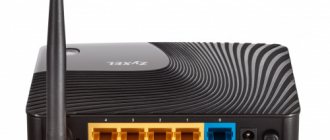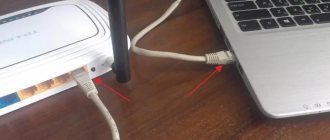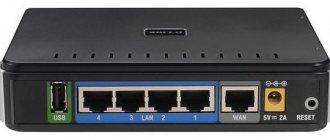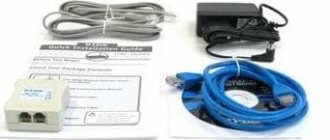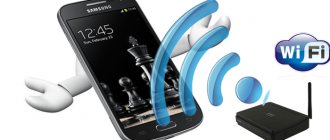During the process of setting up the router, or after setting it up, when everything is already working, it often becomes necessary to connect the router to the laptop. So that the laptop has access to the Internet, and it is possible to go into the router settings, if necessary.
This article is for beginners. I'll show you how to connect a router to a laptop without a cable (via Wi-Fi) and via a network cable. It turns out that there are at least two ways in which you can connect these two devices.
There is one point. We do not connect the router to the laptop, but the laptop to the router. Yes, there seems to be no difference, but it will be more correct. The fact is that the router is an independent device. And all devices that connect to it are clients. I have already told you what a router is.
So, two options:
- Without wire, via Wi-Fi. Since almost every laptop has a built-in Wi-Fi module, and the router distributes a Wi-Fi network, most people connect to the Internet “over the air.” It's much more convenient this way.
- Via cable. There are different situations. Maybe Wi-Fi on the laptop is not working, the wireless network is disabled on the router, there are some problems, low speed, etc. In this case, you can connect the router to the laptop using a network cable. But new laptop models (mostly ultrabooks) no longer have a built-in LAN port. Usually, it comes as an adapter in the kit.
I’ll give the answer right away so that in the future questions like “you showed TP-Link as an example, but how to do everything with my ASUS router?” – no matter what manufacturer your router is (TP-Link, Netis, ASUS, D-Link, ZyXEL, Tenda, etc.). It can distribute the Internet via cable and Wi-Fi. Only if it is a regular router, and not some kind of mobile device, or a modem without Wi-Fi.
How to connect a router to a laptop
Users have two ways to connect a laptop to a WiFi router - wirelessly and using a network cable. In both cases, the work does not take much time, provided that the algorithm is strictly followed.
Via WiFi wirelessly
The most convenient way is to use a wireless WiFi connection. To connect a laptop through a router to Wi-Fi, supply power to the router and connect the network cable from the provider to it. Next, take the following steps:
- Enter the router settings and set the necessary parameters.
- Turn on the WiFi module on your laptop using a button or key combination.
- Click on the icon at the bottom right, select the required connection and click Connect.
- Enter the login username and password that were specified during setup.
Knowing how to connect a laptop to a Wi-Fi router wirelessly, you can avoid using a network cable. In the future, the laptop can be moved around the house and be online at a distance of up to 30-50 meters from the router.
If the tray icon does not appear, the required connection can be found in the menu. For example, for Windows 7 you need to go to Start, and then Control Panel and Network Control Center... There, go to the network connection management item, and in it Wireless network connection.
Click on this item twice, and then click on the name and enter your login information.
But remember that there is a limit on simultaneous pairings. If you don't know how many devices can be connected simultaneously via WiFi to your router, it's better to play it safe.
Via cable
If you are unable to connect your laptop to the router via WiFi, you can use a network cable for connection. This option is simpler than when connecting to Wi-Fi. The algorithm is like this:
- Connect the router to power.
- Insert the wire from your provider into the WAN connector.
- Use any of the output jacks to connect a network cable to your laptop.
- Enter the network device menu and make settings.
- Check Internet availability.
Now you know how to connect your laptop to the Internet via a router using a network cable. This option is convenient if the devices are in close proximity and do not move around the room. The advantage of a wired connection is that the network speed is not cut off by the router. In the case of WiFi, this problem is very common.
Where to install the router for optimal signal
Before connecting to a WiFi router from a laptop, decide on the location. If devices are connected to each other by wire, there are no special options - they will have to be installed in close proximity. It's another matter if you plan to connect your laptop to a Wi-Fi router and use a wireless connection. Here the user has more options.
Main recommendations:
- Do not place the router near electrical appliances, such as a TV, microwave, or cordless telephone. This and other equipment can operate in the same ranges, which will lead to interference and signal degradation.
- Consider metal barriers - walls and doors. Concrete or brick partitions can contribute to signal deterioration. Try to connect the Internet to your laptop through a router installed as close as possible or with a minimum number of obstacles.
- If there are a large number of consumers, place the router in the center of the apartment or house. This solution guarantees uniform signal distribution throughout the room. To avoid negative effects from WiFi rays, try to place the router outside of living rooms.
- If you need to connect the router to a laptop without a cable, place it as high as possible, for example, fix it on the wall. The antennas can be placed in any convenient position.
If the choice of location does not allow you to achieve a high signal level, you may need to install additional equipment, for example, a repeater. Or you can install a second router and configure repeater mode on the router.
How to setup
Above we looked at instructions on how to connect the Internet via a WiFi router to a laptop via wire or wireless network. In both cases, device configuration plays an important role. Below we will look at what information you need to enter into the router and PC.
Router
First, let's look at how to connect Wi-Fi on a laptop and set up a router. Let's give instructions using TP-Link as an example. The algorithm of actions is as follows:
- Log in to the router by entering 192.168.1.1 into the browser URL, and then enter your username and password in the authorization fields. If the login panel does not appear, enter other numbers - 192.168.0.1.
- Update the firmware. To do this, download the latest version of the software from the website and install it on the router. First disconnect the cable from the provider, and then enter the system settings and update line. Next, select the file and wait for it to download. At the final stage, restart the device.
- Enter your settings. To connect to the Internet from a laptop via a WiFi router successfully, specify the connection type. To do this, go to the Network section, and there WAN. Specify the required parameters (must be in the agreement with the provider) and save the data.
- Set Wi-Fi settings. Before connecting your laptop to the router via WiFi, set the network name and login password. To do this, go to the Wireless network section, and there are settings. Fill in the fields with the name, indicate the region, channel (Auto), mode (11bgn), channel width (Auto). Or you can independently figure out which channel is better to choose and tune in to it.
- Go to the security section, set the protection level to WPA2 and enter the password in the special field. Try to keep it reliable. If you put the same numbers, anyone can connect to the laptop.
After saving the data, reboot the router. Now you can connect to the Internet via a WiFi router on your laptop and use the capabilities of the global network.
If you have problems with the setup, you can ask someone to connect remotely to the router via the Internet and help.
Laptop
Certain settings must be made on the laptop itself. To do this, go to the Control Panel, and then go to Network and Internet.
Select Network Connections. Next, find your connection, right-click and go to Properties. In the next step, check the Internet Protocol version 4 box, click Properties and check the boxes for obtaining an IP address and DNS server automatically.
After these steps, connecting your laptop to the Internet via a WiFi router should not cause any difficulties.
Using mobile Internet as a modem
All advertisements trumpet high-speed Internet access from anywhere in your home region - useful 3G and 4G USB modems are supplied in the form of a flash drive, take up minimal space and do not require wires or specific knowledge to set up. Users can only choose a provider, connect the purchased device to a laptop and receive the paid service. However, sometimes difficulties arise, so it is better to dwell on each point in more detail.
- Unpack the modem, install the SIM card in the appropriate slot according to the attached instructions. Connect to the USB port of a laptop or router. In the latter case, you will have to choose a suitable location to transmit a stable signal over a wide area.
- After connecting, you should immediately proceed to installation. As a rule, modems purchased from a large provider are fully configured or require a small number of manipulations to obtain the desired result. It is enough to use a disk with drivers for the modem and special software that allows you to track the speed, traffic consumed, and the number of days remaining on the tariff.
- If the device comes with login information, for example, a connection number or password, then all information will have to be entered in the network or work profile settings in the appropriate input fields.
Today, wireless connections are used everywhere. Agree, it’s much more convenient when you can work from any apartment or office, and the device is freed from the clutter of endlessly tangled wires. However, in order to surf the web over Wi-Fi, you still need to configure the access point correctly. You can, of course, seek help from a specialist. But why spend extra money if in most cases you can handle it yourself?
Common problems and solutions
There are often situations when it is not possible to connect to the Internet the first time. In such circumstances, it is necessary to have step-by-step instructions at hand.
If you cannot connect your Wi-Fi router to your laptop, the reason may be incorrect settings or failures in the equipment itself. Do the following:
- Restart your laptop and router. In the latter case, it is better to remove the voltage for a few minutes, and then apply it again.
- Check that the Wi-Fi module is enabled on the laptop.
- Change the wireless network mode. Try connecting to the Internet after changing the mode to 802.11n. Use different options.
- Change the SSID name. One of the reasons why you cannot connect a Wi-Fi router to a laptop wirelessly is duplicate names. Go to settings and change SSID.
- Check the fact of payment for the service to the provider. Due to lack of funds in the account, the service may be disconnected.
- Set network settings to automatically connect if this has not been done previously.
In most cases, if the settings are made correctly, there should be no connection difficulties.
Using mobile Internet as a modem
All advertisements trumpet high-speed Internet access from anywhere in your home region - useful 3G and 4G USB modems are supplied in the form of a flash drive, take up minimal space and do not require wires or specific knowledge to set up. Users can only choose a provider, connect the purchased device to a laptop and receive the paid service. However, sometimes difficulties arise, so it is better to dwell on each point in more detail.
- Unpack the modem, install the SIM card in the appropriate slot according to the attached instructions. Connect to the USB port of a laptop or router. In the latter case, you will have to choose a suitable location to transmit a stable signal over a wide area.
- After connecting, you should immediately proceed to installation. As a rule, modems purchased from a large provider are fully configured or require a small number of manipulations to obtain the desired result. It is enough to use a disk with drivers for the modem and special software that allows you to track the speed, traffic consumed, and the number of days remaining on the tariff.
- If the device comes with login information, for example, a connection number or password, then all information will have to be entered in the network or work profile settings in the appropriate input fields.
There are an inspiring variety of modern technologies for accessing the World Wide Web - these include wireless networks, fiber optic cables, 3G and 4G modems. Each type of Internet access has positive and negative characteristics, such as cost, speed and stability. And the issue of connection complexity remains the same. Are additional specialist services necessary, or can everything be set up without assistants?

